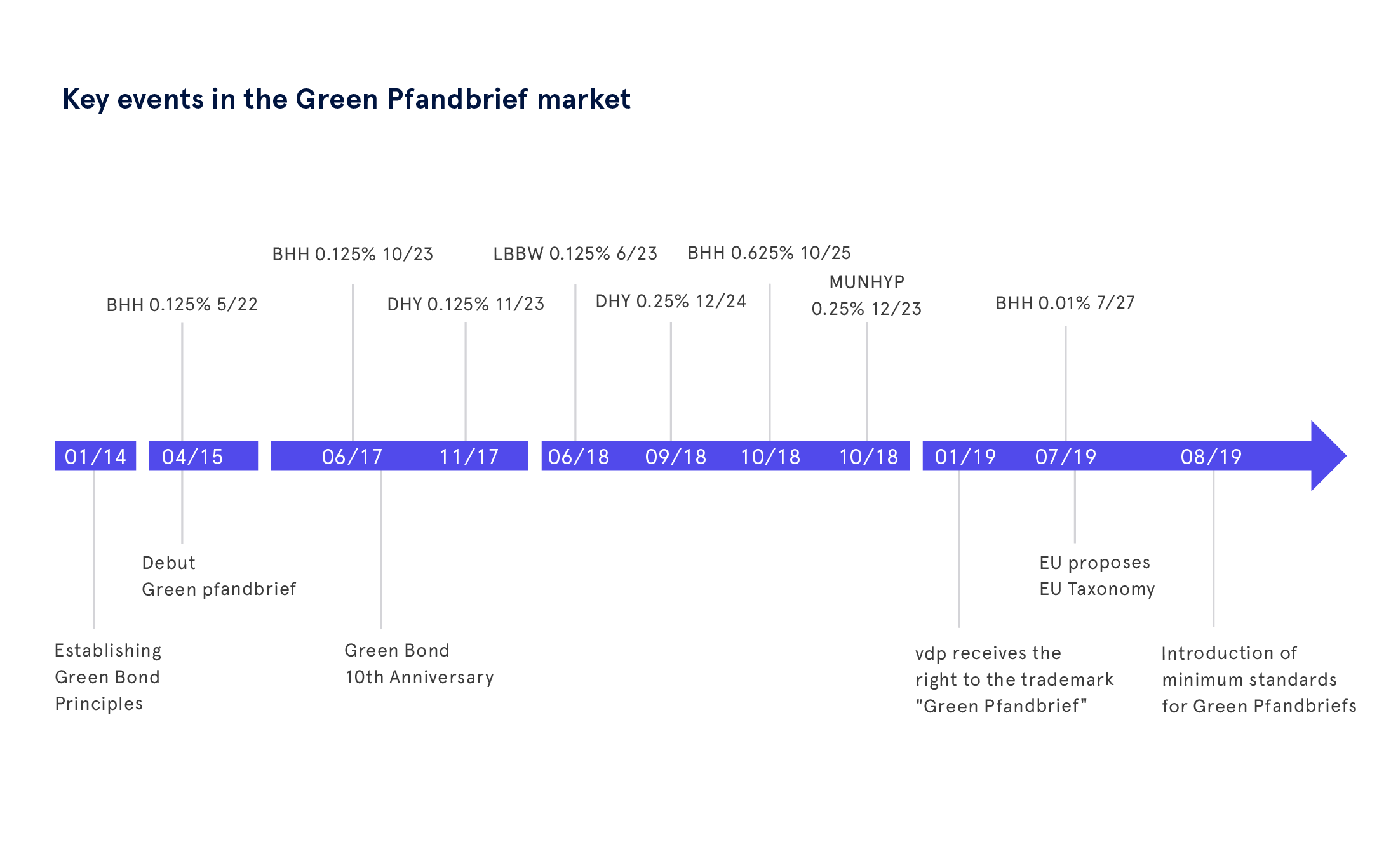September 2019
The Pfandbrief celebrates its 250th birthday in 2019 and can look back on an eventful history with many unique milestones: in 1769 Frederick the Great, King of Prussia, created a consistent legal framework which enabled wealthy people or cities to pledge their property as security in order to obtain credit. He thus laid the foundation for the issuance of Pfandbriefe. Since then the Pfandbrief has shaped the development of the finance and capital markets in Germany – and later also globally – and proved to be an extremely successful and stable financial product.
The Pfandbrief’s success is also due to the continuously evolving legal framework. The Mortgage Bank Act (Hypothekenbankgesetz – HBG) came into force on 1 January 1900 and for the first time provided a harmonised legal foundation, which serves as the basis for the activities of mortgage banks and for the first time granted creditors a preferential right in the event of insolvency.
The Pfandbrief demonstrated its adaptability again in 1990: alongside German reunification and the European unification process, the HBG was revised and adapted to the requirements of capital markets in the European Economic Area. The HBG was replaced in 2005 by the Pfandbrief Act (PfandBG) approximately a century after it first came into effect but still today provides the foundation for the Pfandbrief’s strengths, such as:
- a market standard through consistent regulation,
- a high demand both on the issuer side and the investor side due to high transparency, and
- a reliable legal framework which guarantees resilience in crisis situations and provides a high level of market confidence
The Pfandbrief looks to a green future
The Pfandbrief is also demonstrating its adaptability in its anniversary year and is addressing one of the most important trends in the global financial industry with its focus on sustainability. The establishment of minimum standards for Green Pfandbriefe will strengthen this still young market segment and give issuers the opportunity to exploit the product’s potential to help achieve a more sustainable economy.
Green Pfandbriefe are Mortgage Pfandbriefe which are secured by climate-friendly real estate. By establishing minimum standards, the vdp is providing important guidance for market participants: building on the Green Bond Principles (GBP) of the International Capital Market Association (ICMA) and the PfandBG, the minimum standards also refer to the framework (“taxonomy”) on the growth of sustainable financing put to consultation by the EU in June 2019. Essentially the minimum standards for the issuance of Green Pfandbriefe are to help meet the following objectives in Germany:
- Reduction of CO2 emissions for the building sector to 70 million tonnes in 2030
- CO2 neutrality by 2050 in accordance with the German government’s climate protection plan
Establishment in the market through the introduction of standards
With the establishment of minimum standards issuers agree on a duty of disclosure which will contribute to greater market transparency. Transparency is increased and issuers will meet the minimum standard through the following mandatory documents:
- Provision of information about the real estate in the cover pool
- Publication of the “Green Bond Framework”
- Preparation of an external review by a qualified independent party (“second party opinion”)
- Completion and publication of an annual impact report
The vdp acquired the trademark rights to the Green Pfandbrief from Berlin Hyp in January this year to make it easier for investors to identify Green Pfandbriefe that meet the minimum standards. The vdp has thus made a further contribution to enhancing the market segment and created a platform for comparing products and transparency. For issuers to be able to use the trademark rights they must adhere to the guidelines defined in the minimum standards.
The Green Pfandbrief market benefits from standards
Currently benchmark Green Pfandbriefe with a value of 4 billion euros are in circulation, of which 2.5 billion euros were issued in the past twelve months. The creation of the minimum standards is a good and powerful sign to further establish and develop the market. Pfandbrief banks will receive additional guidance during the issuance process and sustainable investors will in future have confirmation from the issuer that the requirements have been met. The minimum standards serve as additional guidelines for investors who are explicitly looking for sustainable investment opportunities. This greatly increased transparency will further enhance the stability and continuity of the market.
 Source: UniCredit
Source: UniCredit



